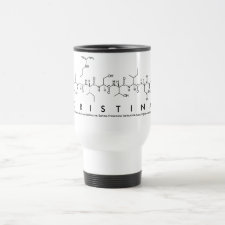
Authors: Baggiani C, Baravalle P, Giovannoli C, Tozzi C
Article Title: Binding behaviour of pyrimethanil-imprinted polymers prepared in the presence of polar co-monomers.
Publication date: 2006
Journal: Journal of Chromatography A
Volume: 1117
Issue: (1)
Page numbers: 74-80.
DOI: 10.1016/j.chroma.2006.03.067
Alternative URL: http://www.sciencedirect.com/science/article/B6TG8-4JMVHSG-M/2/811dfc94f9f4c7c32445d5575685bd7a
Abstract: Here, we report the evaluation of the molecular recognition properties of a small library of pyrimethanil-imprinted pellicular beads prepared in the presence of several co-monomers of decreasing hydrophobicity, namely N-methacrylamidopiperidine, methylmethacrylate, N-methacrylamidopyrrolidine, N-vinylpyrrolidone, 2-hydroxyethylmethacrylate, acrylonitrile, N-methacrylamidomorpholine, and N,N-dimethylacrylamide. The effect of the presence of these co-monomers on the molecular recognition properties of the beads were studied by eluting the pyrimethanil/Sudan Orange G pair, in the presence of acetonitrile/water mobile phases of increasing polarity. The pyrimethanil was used to probe the specific interactions due to the presence of binding sites. The Sudan Orange G (that is greatly different from the template but with comparable hydrophobicity and molecular mass) was instead used to probe the non-specific interactions due to the bulk of the polymer. The experimental results show that the polymers prepared in the presence of polar co-monomers are characterised by a marked increase of the analytes retention if compared with the imprinted polymer prepared without these co-monomers. The increase of retention is more pronounced for pyrimethanil compared to Sudan Orange G with polymers prepared in the presence of the more hydrophilic co-monomers N-vinylpyrrolidone, acrylonitrile and N-methacrylamidomorpholine, while N,N-dimethylacrylamide is the only co-monomer that does not significantly influence the retention of analytes. Increasing the amount of water in the mobile phase progressively diminishes this effect
Template and target information: pyrimethanil, N-(4,6-dimethylpyrimidin-2-yl)phenylamine
Author keywords: molecular imprinting, co-Monomer, molecular recognition, N-(4,6-dimethylpyrimidin-2-yl)phenylamine, Pyrimethanil, 4-Phenylazoresorcinol, Sudan Orange G



Join the Society for Molecular Imprinting

New items RSS feed
Sign-up for e-mail updates:
Choose between receiving an occasional newsletter or more frequent e-mail alerts.
Click here to go to the sign-up page.
Is your name elemental or peptidic? Enter your name and find out by clicking either of the buttons below!
Other products you may like:
 MIPdatabase
MIPdatabase









